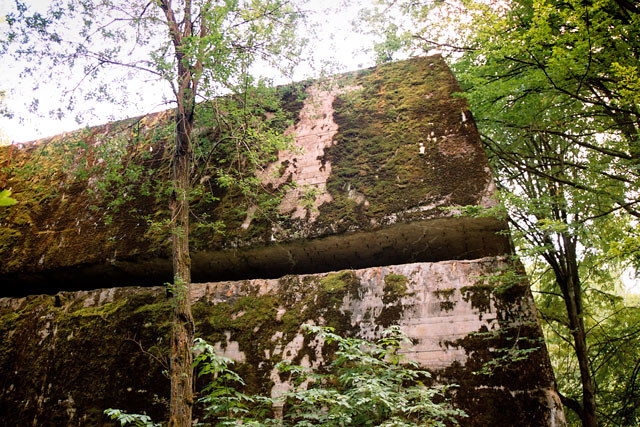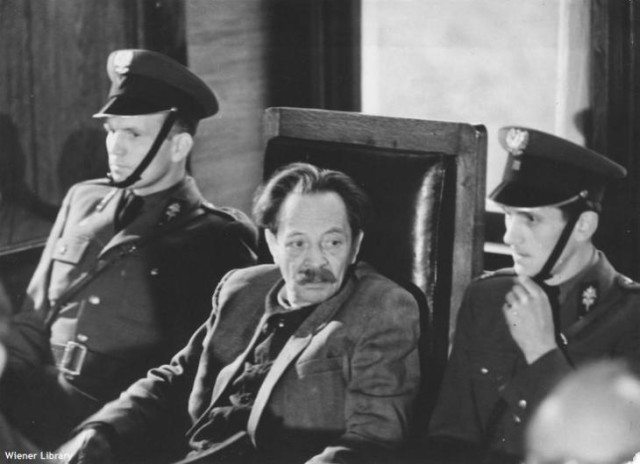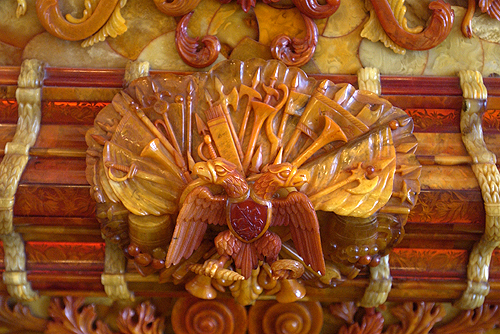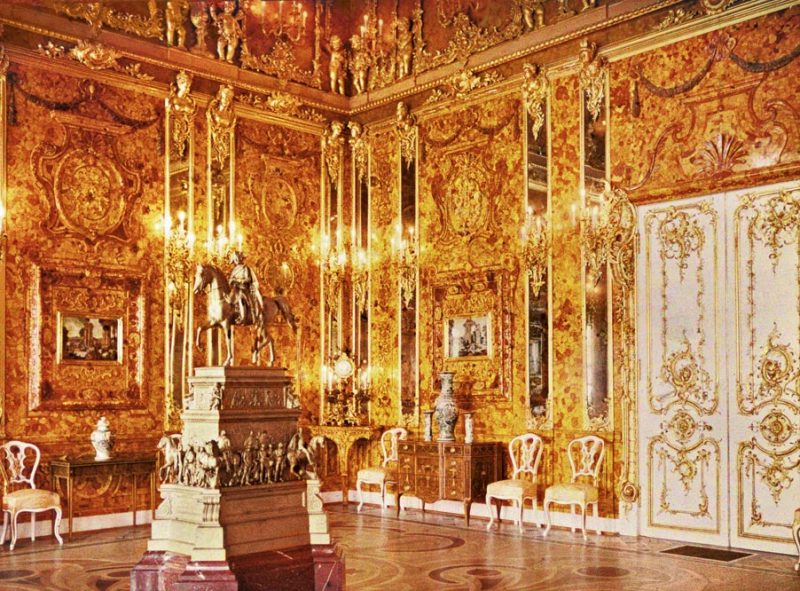Under a peaceful forest floor in Poland’s Mazrian Lake District lies a mystery. A weathered and overgrown complex of WWII German barracks and bunkers has a secret room that has been recently discovered through ground penetrating radar. The man behind the discovery, Marmerki Museum Curator Bartlomiej Plebanczyk, believes he has found the location of one of history’s greatest spoils of war – the Lost Amber room.
The Amber Room consisted of panels of amber worked with gold over 590 square feet. It was commissioned by King Frederick of Prussia for his wife, but when Peter the Great of Russia reveled in its beauty, King Frederick’s son gave it to the Russian ruler as a gift. It was packed away and sent to Catherine Palace in St. Petersburg. It is not inconceivable to move a room – this one moved multiple times.
When Germany invaded the Soviet Union during WWII, curators tried to hide the Amber Room behind wallpaper. The ruse didn’t work and German soldiers had it disassembled within 36 hours and on its way to Konigsberg Castle in East Prussia.
In January of 1945, Hitler ordered that looted treasures be moved away from Konigsberg. It is believed that the Amber Room was on display at that time and not in crates.
Before the Amber room could be relocated, the civil administrator in Konigsberg, Erich Koch, abandoned his post. General Otto Lasch was left in command and it is unknown whether or not he successful in removing the treasures.
If the Amber Room still exists today, it is worth more than $500 million.

Bartlomiej Plebanczyk believes that it has. Rumors and legends in the area suggest that he is right.
When Erich Koch was jailed, he hinted that there was a secret bunker in that area. German trucks were seen unloading heavy cases there after the war. In the 1950s, the Polish Army’s sappers talked to a witness that saw this convoy in the winter of 1945. He gave the exact location of the bunker and said that after the goods were unloaded, the bunker was walled up.
Plebanczyk says, “Then the sappers came to blow up random locations in the foundations of bunkers, but they found nothing. But I used ground penetrating radar, so I could discover the treasure.”
The room he found with his ground-penetrating radar measures 2 meters by 3 meters (roughly 6X9 feet). There is no record of the room in any previous study of the bunkers. It is truly a secret room.
“We need to drill into the room in the bunker and lower a camcorder there. However, we have to wait for the consent of the conservator conservation officials.”
Those officials, in the town of Wegorzewo, have confirmed that they will be pursuing the investigation of the chamber.
The deputy mayor, Andrzej Lachowicz, said to reporters, “If it’s not the Amber Room, then maybe it’s some other treasure.”
Other theories about the location of the Amber Room abound. Some say it was lost in a fire at Konigsberg Castle before Hitler’s orders to move treasure were ever given.

Erich Koch becomes an even more mysterious figure in treasure hunting legend. Residents say he made an appearance in the 1960s when he brought from prison by Poland’s SB (Communist Service of Safety) to the spot in the woods where the bunkers remained.
Some researchers claim that before he fled in 1945, Koch had the Amber Room sent to his own property near the Pasłęka River in Poland.
Other theories include one in which the replica of the Amber Room at the Catherine Palace is the real thing and not a fake at all. Another suggests it fell from a plane, and yet another that it is at the bottom of a Finnish lake. Some claimed to have witnessed the room being loaded onto the Wilhelm Gustloff in January of 1945, but the ship was soon sunk by a Soviet Submarine.
A real piece of the Amber Room does exist and it negates the theory that the room was melted in the fire at Konigsberg Castle. A soldier told his family that he had helped pack up the room and had kept a stone mosaic from the room as a souvenir. The family turned it over to Russian authorities in 1997. It was used as a reference in the construction of the replica.

Plebanczyk’s hopes are backed by years of rumors and eyewitness reports, not to mention the untouched nature of the secret bunker room. Let’s hope that the lowered camera scope he is planning has better results than last year’s would be Nazi Gold Ghost Train hunters. Their search came to nothing, but they didn’t have as much going for their case as this one has.
By Jinny McCormick with special thanks to Polish contributor, Damian Lucjan Słoma
